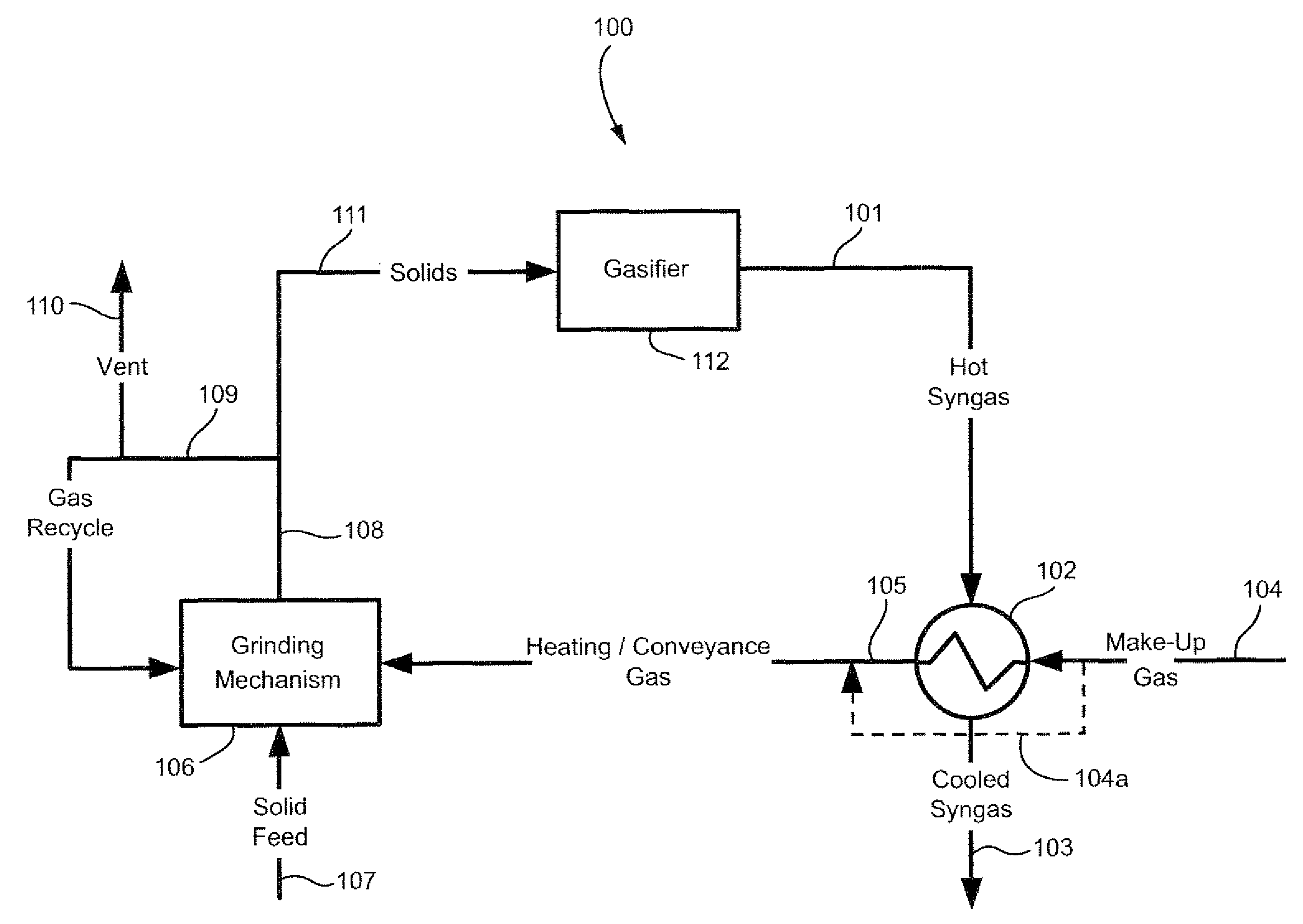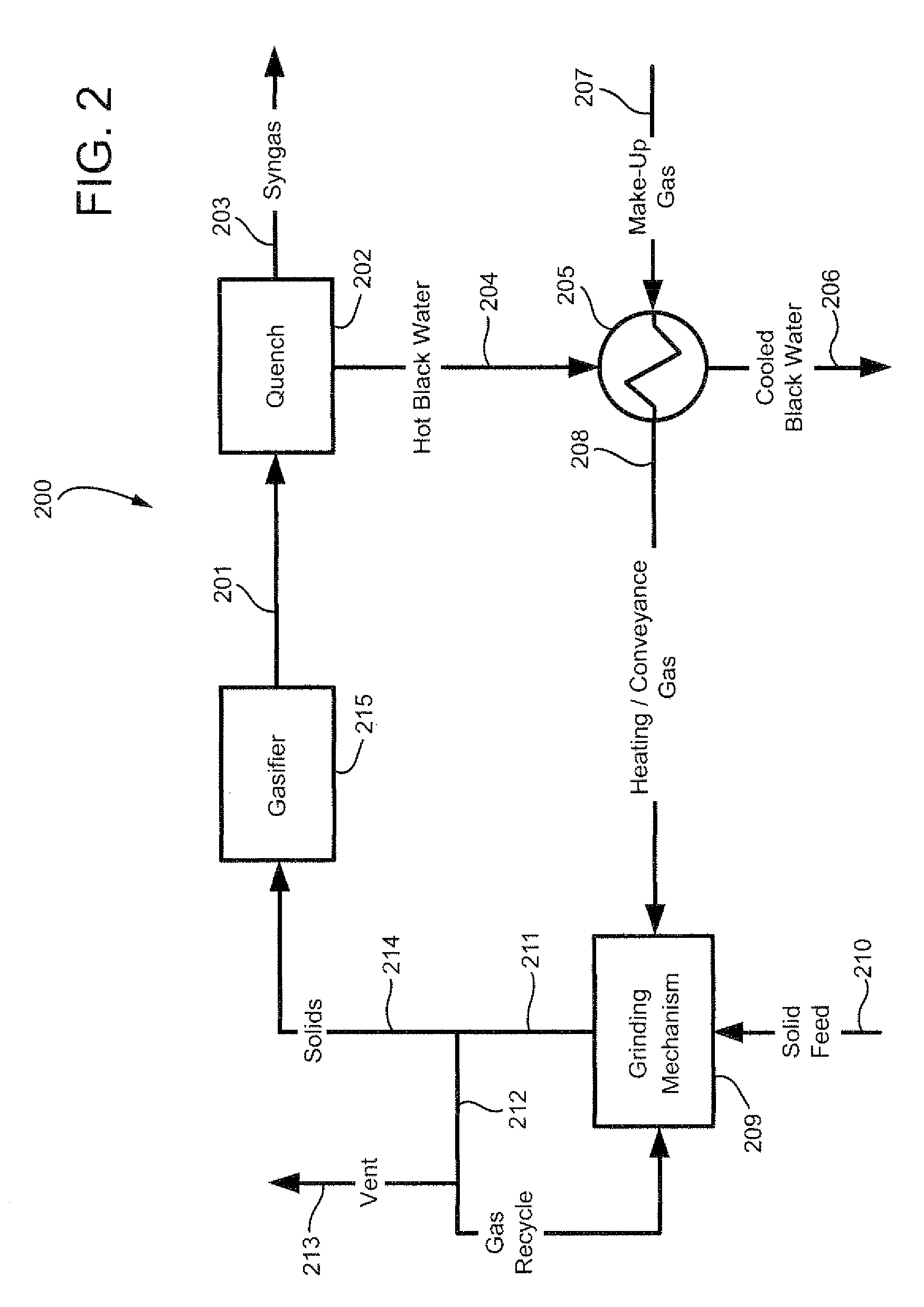Method of using syngas cooling to heat drying gas for a dry feed system
a technology of heat drying gas and dry feed system, which is applied in the field of dry feed system heat drying gas using syngas cooling, can solve the problems of reducing overall plant efficiency, not being able to economically dry solid feedstock, and not being able to provide the necessary heat engine for separate power plant facilities,
- Summary
- Abstract
- Description
- Claims
- Application Information
AI Technical Summary
Benefits of technology
Problems solved by technology
Method used
Image
Examples
second embodiment
[0031]Referring now to FIG. 2, an exemplary process flow diagram of the process according to the invention is depicted generally at 200, again using the heat removed from the hot syngas as the principal means to dry a solids feedstock. However, in this embodiment, the hot syngas produced by gasifier 215 (nominally at about 2500° F.) in exit stream 201 initially passes through a quench cycle 202 such as a gas-to-liquid heat exchanger which initially cools the syngas as shown leaving the quench cycle at 203.
first embodiment
[0032]The resulting hot liquid stream from the quench cycle at approximately 450° F. (labeled “hot black water”) 204 serves as the primary heating medium for recovering the residual syngas exhaust heat using syngas cooler 205. The cooled black water stream 206 typically is on the shell side of syngas cooler 205. The tube side includes makeup gas stream 207 consisting primarily of oxygen limited gas as described above which picks up a substantial amount of heat on the tube side to form hot “heating / conveyance” gas 208 for use in the grinding mill as generally described above in connection with the
[0033]As FIG. 2 also illustrates, the solids coal feed 210 to the grinding mill 209 loses a substantial fraction of entrained liquid (e.g., water vapor) during the grinding step after exiting grinding mill as shown at 211. This particular embodiment thus contemplates using a recycle stream 212 and vent arrangement as shown for the purpose of removing excess water vapor via vent line 213 as d...
third embodiment
[0036]Also similar to earlier embodiments, the heat recovery system depicted in the third embodiment recycles a certain amount of the entrained solids / vapor stream to the grinding mechanism (see recycle 314), for example by passing the two phase recycle through a cyclone separator to drop out the entrained particulates and venting a portion of the vapor stream as shown at 315 containing water vapor and fines generated during the prior heating and pulverizing steps. The considerably drier, vapor and particulate feedstock solids stream 316 is then fed to gasifier 317.
PUM
 Login to View More
Login to View More Abstract
Description
Claims
Application Information
 Login to View More
Login to View More - R&D
- Intellectual Property
- Life Sciences
- Materials
- Tech Scout
- Unparalleled Data Quality
- Higher Quality Content
- 60% Fewer Hallucinations
Browse by: Latest US Patents, China's latest patents, Technical Efficacy Thesaurus, Application Domain, Technology Topic, Popular Technical Reports.
© 2025 PatSnap. All rights reserved.Legal|Privacy policy|Modern Slavery Act Transparency Statement|Sitemap|About US| Contact US: help@patsnap.com



